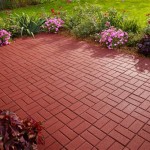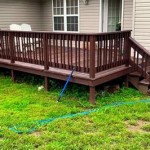Polymeric Sand For Patio Pavers: An In-Depth Guide
Polymeric sand has emerged as a preferred jointing material for patio pavers, driveways, and walkways. It offers significant advantages over traditional sand, including enhanced stability, reduced weed growth, and resistance to erosion. This article provides a comprehensive understanding of polymeric sand, its application, benefits, and limitations when used with patio pavers.
Understanding the composition of polymeric sand is crucial for its effective use. It's typically a blend of fine sand, polymers (specifically engineered plastics), and additives. These polymers are the key ingredient that differentiate it from regular sand. When activated by water, the polymers bind the sand particles together, creating a cohesive and durable jointing material. The additives often include agents to prevent mold and mildew growth, as well as stabilizers to improve UV resistance and longevity.
The selection of the appropriate polymeric sand is paramount. Different grades of polymeric sand are available, each formulated for specific paver joint widths. Fine-grade polymeric sand is suitable for narrow joints (typically less than 1/8 inch), while coarser grades are designed for wider joints (up to 4 inches). Using the wrong grade can lead to inadequate bonding, cracking, or even washing away of the sand. Always consult the paver manufacturer's recommendations and the polymeric sand product specifications before making a selection.
Key Point 1: Advantages of Using Polymeric Sand
The primary advantage of polymeric sand lies in its superior joint stabilization. Traditional sand is easily displaced by rain, wind, or foot traffic, leading to instability in the paver structure and potential safety hazards. Polymeric sand, once hardened, creates a resilient and interlocking joint that resists these forces, keeping the pavers firmly in place. This contributes to a longer lifespan for the patio or walkway.
Weed growth between pavers is a common issue that requires constant maintenance. Polymeric sand effectively inhibits weed growth by creating a dense, impermeable barrier that deprives weed seeds of the necessary sunlight and nutrients. While it doesn't completely eliminate weeds, it significantly reduces their occurrence and the need for herbicides or manual removal.
Erosion, particularly in areas with heavy rainfall or sloping terrain, is a major concern for paver installations. The hardened nature of polymeric sand makes it highly resistant to erosion caused by water runoff. This is particularly important for driveway installations where the paver surface is exposed to vehicle traffic in addition to weather elements.
Furthermore, polymeric sand offers resistance to insects. Ants, in particular, often burrow into traditional sand joints, undermining the paver base. The hardened polymeric sand acts as a deterrent, preventing insects from excavating the joints and compromising the stability of the paver installation. This advantage reduces maintenance requirements and preserves the structural integrity of the patio or walkway.
Proper installation is critical to realizing the full benefits of polymeric sand. Failing to follow the manufacturer's instructions can lead to problems such as staining, improper hardening, or premature failure of the joints. The installation process typically involves sweeping the sand into the joints, compacting it, and then activating it with water. Each step must be executed with precision to ensure optimal performance.
The aesthetic appeal of a paver patio or walkway is significantly enhanced with polymeric sand. It provides a clean, uniform look to the joints, improving the overall appearance of the paved surface. Unlike traditional sand, which can be uneven or discolored, polymeric sand maintains its color and texture, contributing to a consistent and visually pleasing finish. Various colors of polymeric sand are available allowing for matching with paver color.
Overall it increases the life span of your patio or walkway. It reduces the need to replace or repair pavers and lowers maintenance costs by inhibiting weed growth and erosion.
Key Point 2: The Installation Process
The first step in installing polymeric sand is ensuring the pavers are properly installed on a well-compacted base. The base should consist of a layer of gravel or crushed stone, properly compacted and graded to provide a stable and level surface. This base is essential for preventing differential settlement in the pavers, which can lead to cracking or displacement of the polymeric sand joints.
Once the pavers are in place, thoroughly sweep the area to remove any debris, dirt, or existing jointing material. The paver surface must be completely clean and dry before applying polymeric sand. Any contaminants can interfere with the bonding process and lead to discoloration or staining of the pavers.
Next, pour the polymeric sand onto the paver surface and use a broom to sweep it into the joints. It's important to completely fill the joints to the top edge of the pavers. Multiple passes may be necessary to ensure all voids are filled and the sand is compacted within the joints. Do not let the sand sit on top of the pavers for an extended period.
After sweeping the sand into the joints, use a plate compactor or hand tamper to compact the sand. Compaction is crucial for ensuring that the sand settles properly and achieves maximum density. This step also helps to remove any air pockets within the joints, which can weaken the bond.
The activation process is the most critical step in the installation. Using a fine spray nozzle, slowly and evenly saturate the polymeric sand with water. Avoid over-watering, as this can wash away the polymers and weaken the bond. The water activates the polymers, causing them to bind the sand particles together. The surface needs to be clear of standing water. Usually two or three saturations are needed with about 15 minutes between each wash.
Allow the polymeric sand to cure for the recommended time period, as specified by the manufacturer. This can range from 24 to 72 hours, depending on the type of polymeric sand and the weather conditions. During the curing period, avoid walking or driving on the paver surface to allow the sand to fully harden.
Proper joint filling is fundamental for preventing paver movement and ensuring long-term stability. Incompletely filled joints can lead to water penetration and erosion of the base material, compromising the entire paver structure.
If the paver joints sink after the first application, repeat the sweeping, compacting, and watering process until they are fully filled. This may require multiple applications, particularly for wider joints or areas with significant settlement.
Key Point 3: Potential Issues and Solutions
One common issue with polymeric sand is staining of the paver surface. This can occur if the sand is not properly swept off the pavers before activation or if the pavers are porous and absorb the polymeric sand particles. To prevent staining, thoroughly sweep the pavers after applying the sand and consider using a paver sealer to protect the surface.
Another potential problem is improper hardening of the polymeric sand. This can be caused by over-watering, under-watering, or exposure to rain during the curing period. To avoid this issue, carefully follow the manufacturer's watering instructions and protect the paver surface from rain until the sand has fully cured.
Cracking of the polymeric sand joints can occur if the pavers are not properly supported or if the base is unstable. Ensure that the paver base is well-compacted and level before installing the pavers. If cracks develop, remove the damaged sand and replace it with new polymeric sand, following the installation instructions.
Efflorescence, a white powdery substance, can sometimes appear on the surface of polymeric sand. This is a natural phenomenon caused by the migration of soluble salts to the surface. Efflorescence can be removed with a specialized cleaner designed for paver surfaces, but it may reappear over time.
Choosing the correct type of polymeric sand is critical. Using a fine grade polymeric sand in wide joints will lead to failure of the jointing material. Using a coarse grade polymeric sand in tight joints make it difficult to fill the joint and it doesn't set up properly.
Additionally, consider the color of the polymeric sand to match the pavers. Using a darker colored sand with light pavers will create a striking contrast but can be undesirable for some designs. Conversely, using a light colored sand with dark pavers can create a more subtle and blended look.
Addressing these potential issues proactively can help ensure a successful and long-lasting paver installation with polymeric sand joints. Regular maintenance, including sweeping and occasional cleaning, will further extend the life and appearance of the paved surface. Inspecting the pavers regularly and making simple repairs will keep costs down in long run.

Guide To Using Polymeric Sand For Your Patio Driveway Or Walkway Peterborough Landscape Supply

Benefits Drawbacks Using Polymeric Sand On Hardscape Diy

Polymeric Paver Sand Bagged Joint Mutualmaterials Com

How To Polymeric Sand A Paver Patio Diy Youtube

Polymeric Sand Why And How To Use It With Pavers Js Brick

Is Polymeric Joint Sand Weed Proof Il Stone Brick Pavers Walkway Driveway Landscape Paver Restoration Contractors

How To Use Polymeric Sand Block Weeds In Our Paver Patio Young House Love

How To Add Polymeric Sand Quikrete Walkmaker Pavers

Polymeric Sand Installation Bergen Wash Seal

Installing The Polymeric Sand Paver Patios And Walkways








